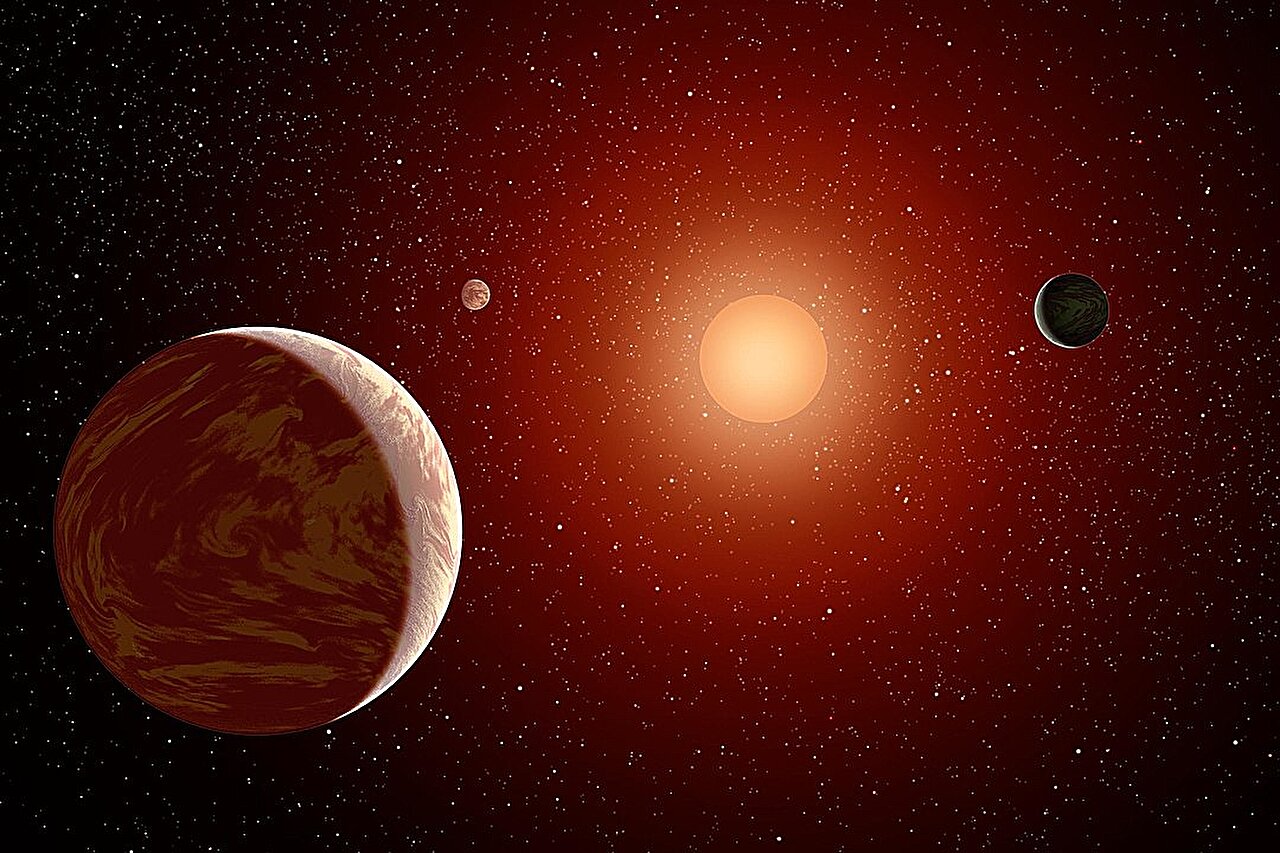Exoplanet TOI-6383A, discovered in a binary system, may answer an old question. Why do small stars like red dwarfs still form massive planets?

Exoplanet discovery
In recent years, the number of known exoplanets has grown exponentially. Nowadays, the existence of 5,799 worlds in 4,310 star systems has been confirmed, and thousands more candidates are awaiting confirmation. Especially interesting for astronomers are small stars, so-called red dwarfs. An unexpectedly large number of planets have been discovered around them.
In particular, astronomers have discovered many gas giants and super-Earths that are several times the mass of our home planet. And many of them orbit around these low-mass, cold stars.
Scientists recently studied TOI-6383A, a cool star with less than half the mass of the Sun that orbits in a pair with an even smaller and cooler companion, the red dwarf TOI-6383B. In a recent study, an international team of astronomers from the Searching for Giant Exoplanets around M-dwarf Stars (GEMS) project discovered a giant planet passing in front of a primary star designated TOI-6383Ab.
This planet is similar in size and mass to the system’s companion star, raising the question of the formation of giant planets in red dwarf star systems. The paper detailing the scientists’ findings was recently accepted for publication in the Astronomical Journal and published on the arXiv preprint server.
Features of TOI-6383 system
The TOI-6383 system consists of two red dwarf stars located about 560 light-years away from Earth. The primary star (A) is about 46% less massive than the Sun and about equally smaller in diameter. Its surface temperature is 3444 K — about 60% of the Sun’s surface temperature.
Its companion (B) is 20.5% more massive than our Sun, 22% larger than it, and has an approximate surface temperature of 3,121 K (2,848 °C; 5,158 °F). On the other hand, TOI6383Ab has a mass and size comparable to Jupiter and an orbital period of about 1.79 days.
Based on data from NASA’s Transiting Exoplanet Survey Satellite (TESS), a team of GEMS researchers is searching for giant exoplanets around M-dwarf stars using the transit method (transit photometry). It consists of observing stars for periodic “dips” in brightness that may indicate the passage of planets (called transits) in front of their parent stars relative to the observer.
The exoplanet was detected with TESS and confirmed by combining photometry and radial velocity measurements with ground-based telescopes.
Theories of planet formation around red dwarfs
This study aims to test the theories of planet formation, which can be divided into two main categories. The first scenario is the core accretion model, where planetesimals coagulate around a massive core.
However, in recent decades this model has begun to be doubted, mainly because it is inconsistent with the mass “budget” and timescale of M dwarf formation. Dwarf stars typically have less massive protoplanetary disks around them, meaning they don’t have enough material to form giant planets.
The second scenario is the rapid formation model, where a massive protostellar disk disintegrates into clumps under its own gravity, which then accrete material and form planets. The discovery of this latest massive planet around a low-mass star will help astronomers test these competing models.
To date, only 20 massive exoplanets have been discovered around M-type red dwarfs. The GEMS study aims to increase this number to at least 40, after which more accurate tests of these models can be conducted.
According to phys.org


